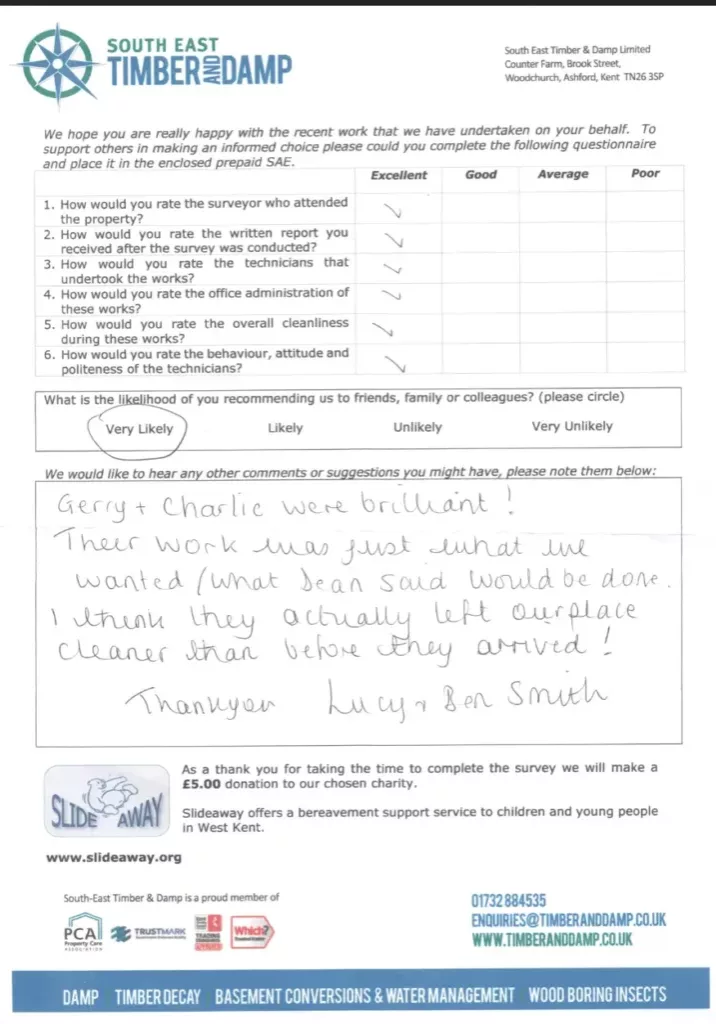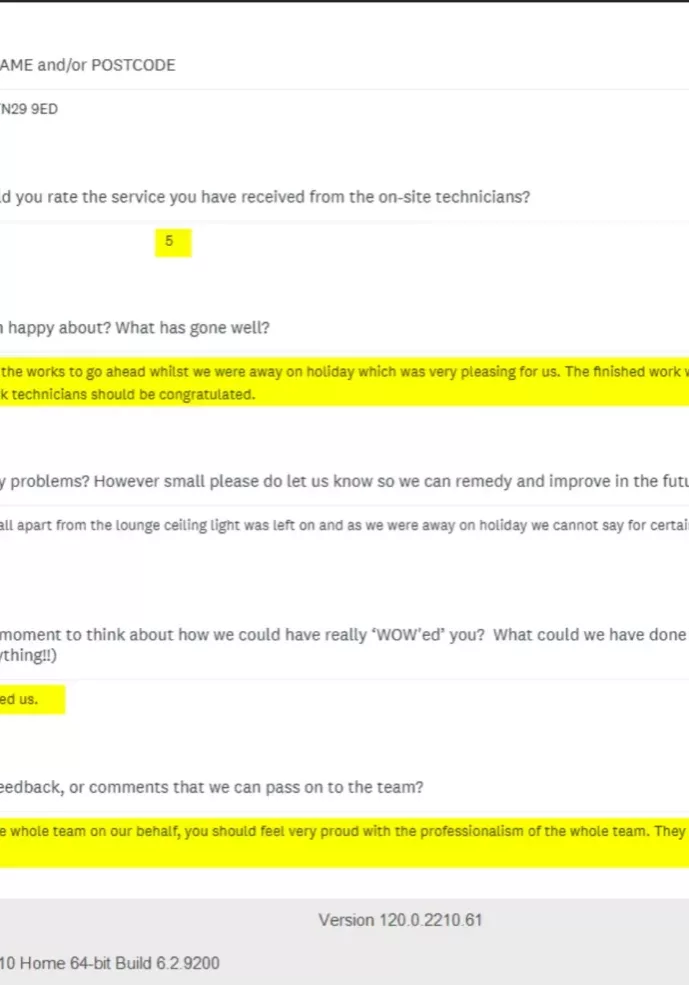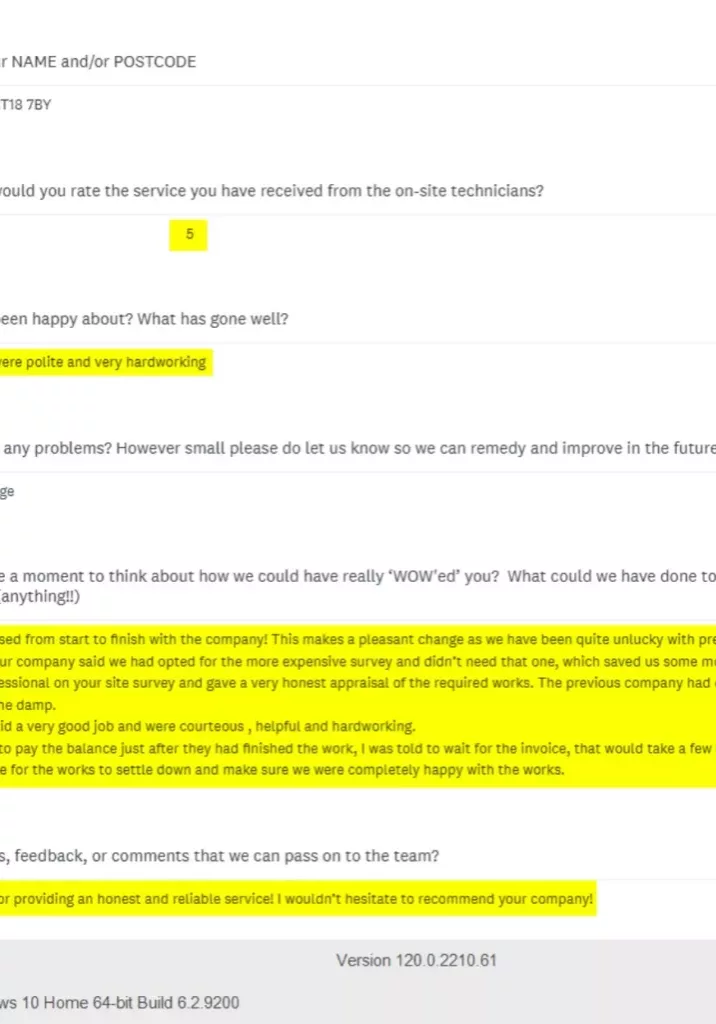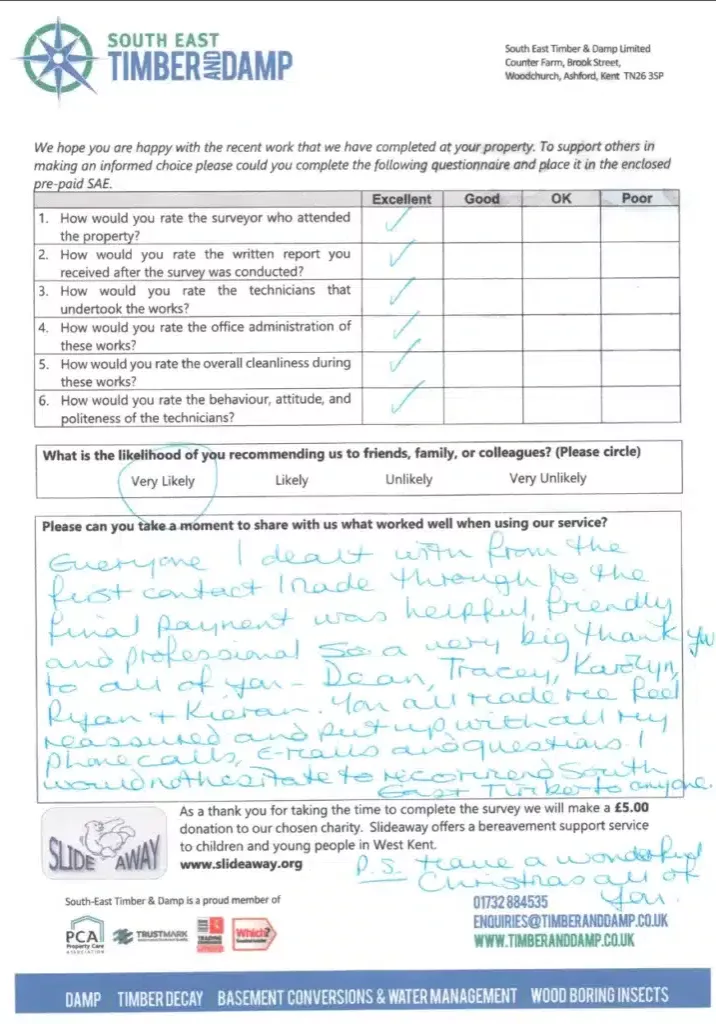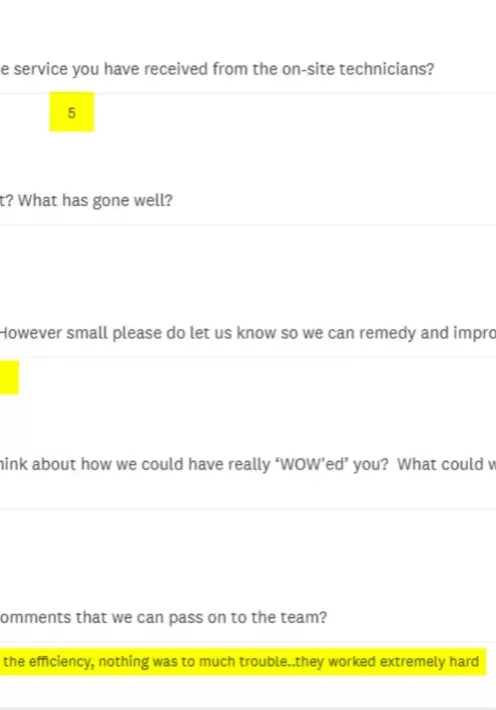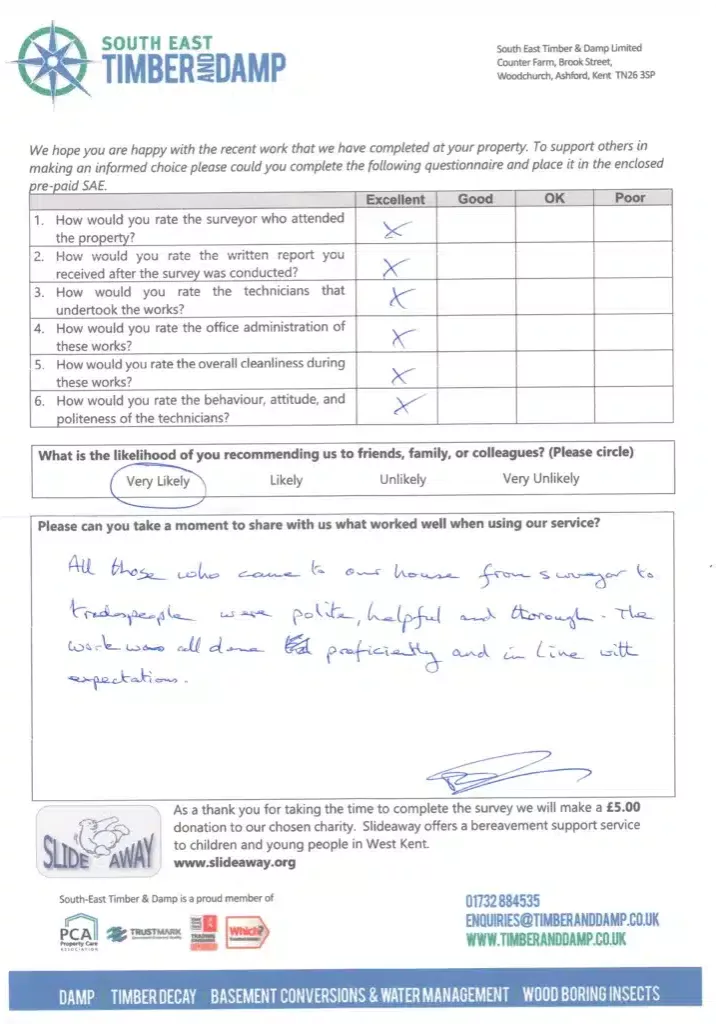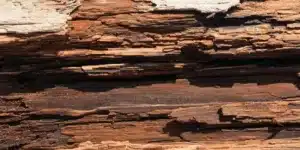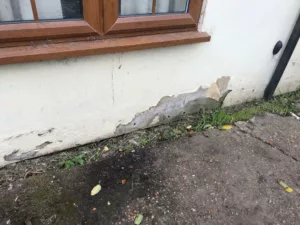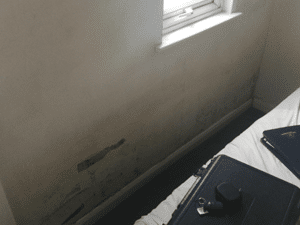Book your survey today!
Identifying The Source of Penetrating Damp
Penetrating damp is the process of water moving horizontally from external walls into the property, often leading to a range of issues.
To the untrained eye, it is often misdiagnosed as Rising Damp, and while some of the symptoms are similar, the treatment required is different.
If left untreated, it can lead to problems with heating loss, wood rot and unsightly water damage, internally and externally.
Penetrating damp can impact any building, but older buildings that don't have a regular maintenance programme tend to be disproportionately affected. More modern buildings can suffer a similar fate as a result of poor standards of work or design.
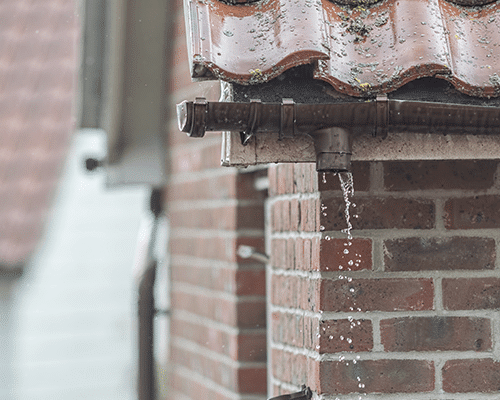
What Causes Penetrating Damp?
At a fundamental level, penetrating damp results from bridging between external and internal walls that enable water to transfer between both.
The brickwork on buildings, modern and old, is made to absorb rainwater and evaporate when the rain stops. However, during prolonged periods of rainfall or if there is a defect resulting in a more consistent flow of moisture, the increased water in the brickwork will start to move inwards.
To get to the internal walls, the water still needs a bridge.
In many older buildings there is no gap between the walls, so when the external brickwork fails, this acts as the bridge to the internal walls.
In more modern buildings, the cavity between the external brickwork and the inner wall, generally 50mm, is often filled with cavity wall insulation. This can range from foam, bead polystyrene or even wool fibre. When moisture penetrates the external walls, the cavity wall insulation can act as a bridge. For more on cavity wall insulation, check out this page.
In the main we tend to find the following issues are the cause of external brickwork failure.

Broken or damaged rainwater goods
Rainwater goods mean any guttering or drainpipes in place to guide rainwater towards the drains. In our experience, damaged or broken rainwater goods are the main cause of penetrating damp.
Many older buildings still have the original cast iron downpipes and gutters. While these are attractive features and add to the building's aesthetic, iron will almost certainly suffer from corrosion. Even those who maintain the highest maintenance standards can find it challenging to ensure cast-iron rainwater goods remain in good condition.
Most modern homes have PVC rainwater goods, and while these tend to stand up far better to the elements, they are prone to damage from external factors, i.e. us humans bumping into them, knocking them, breaking them.
However, the most common cause of failure is a blockage, which causes an overflow, leaking or burst pipe. This will result in the brickwork around the pipe suffering during periods of prolonged rainfall.
So keeping your pipes and gutters clear of leaves, moss, and other foliage is crucial to your regular maintenance programme.
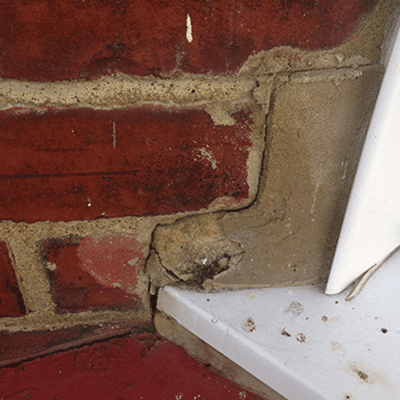
Brickwork
Another major cause of penetrating damp is defects in the brickwork. Over time brickwork can become porous due to, among other things, frost, failure in the mortar, or just damaged brickwork, causing a weakening in the defence against water.
Defects in the brickwork or mortar allow moisture to penetrate and should be dealt with as soon as possible.
If you notice any issues in your brickwork, it is worth getting a survey to catch the problems before they escalate. There are treatments for tired brickwork, including a range of waterproofing treatments that will maintain the porous nature while restoring the protection.
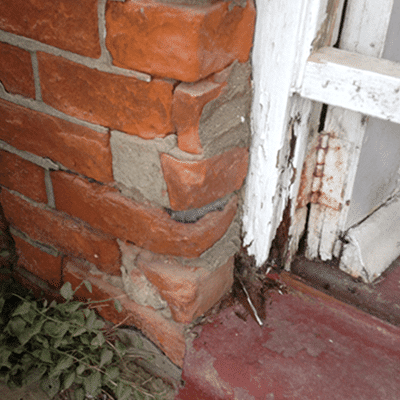
Windows and Doors
Any time there is a break in brickwork, it will create potential weaknesses that moisture can penetrate.
So, as part of a regular maintenance check of your property, you should inspect your windows and doors for potential issues such as gaps or cracks. Where possible, also get up and check the flashing around your chimney.
Water will find a way to the brickwork at the first sign of weakness, so act quickly to avoid future problems with penetrating damp. There are products such as frame sealant that can provide suitable solutions.
Identifying Penetrating Damp
There are some tell-tale signs to look out for when confirming whether or not you have penetrating damp.

Internal Signs
You will see watermarks on your wall or around doors and windows at the outset if you have penetrating damp. If there were an issue with rising damp, there would be a salt mark accompanying the water. Condensation may start to form around the cold areas if you do have a problem with penetrating damp.
Here is a list of symptoms to look out for:
- Damaged decoration - you will notice localised signs of dampness with watermarks on your wallpaper, and your plasterboard will show signs of damage as the moisture will weaken it.
- Mould - mould is a surefire way to identify a problem with damp. The difficulty is in determining which type of damp you have. If you notice localised patches of dampness close to issues on your outside wall, then the likelihood is you have penetrating damp.
- Wet Rot - Penetrating damp can also cause problems with the timber in your building. Whether it is within the walls or floors of your building, this can severely impact your building’s infrastructure. Not as easy to identify, so well worth getting a specialist to check it out.

External Signs
Penetrating damp starts on the outside of your building, so, as is often the case, prevention is better than cure. Taking a bit of time to inspect your building for these issues regularly may help you solve the problem before it starts.
However, if you notice the internal signs of penetrating damp, then checking the exterior will confirm your suspicions.
- Consistent dampness - You will notice that, almost certainly around either gutters or downpipes, windows or doors, there will be damp patches on your brickwork. There is a chance this moisture will start to support foliage growth, as the water gives life to the organisms flying in the air. There could be moss or algae growth which will further weaken the brickwork.
- Damaged brickwork - The other tell-tale sign is damaged brickwork. As aforementioned, flaws in your brickwork will present an opportunity for moisture to exploit, and it is an obvious sign of damp.
Our Customer Reviews
Penetrating Damp Case Studies

Need help? Book a survey at a time to suit your schedule
Our mission is to give you the peace of mind you deserve when it comes to waterproofing your house or business. Commission a survey from our team to assess your situation professionally.

